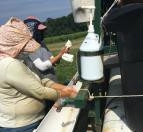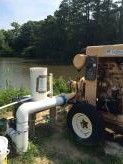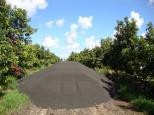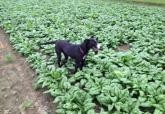Overview of the Food Safety Modernization Act Produce Safety Rule
ID
FST-270NP
Food Safety Modernization Act (FSMA)
The Food Safety Modernization Act (FSMA) was passed in 2011 by President Obama and is the most sweeping reform of our food safety laws in more than 70+ years (since the Food Drug and Cosmetic Act of 1938). The act aims to ensure the US food supply is safe by shifting the focus from responding to contamination to preventing it. The Food and Drug Administration has developed seven different regulations that encompass FSMA including (1) Produce Safety Rule, (2) Preventive Controls for Food for Human Rule, (3) Preventive Controls for Food for Animals Rule, (4) Mitigation Strategies to Protect Food Against Intentional Adulteration Rule, (5) Sanitary Transportation of Human and Animal Food Rule, (6) Foreign Supplier Verification Programs Rule, and (7) Accredited Third-Party Certification Rule. Additionally, many of the FSMA rules require food safety training to fulfill compliance.
Produce Safety Rule (PSR)
The Produce Safety Rule (PSR) is one of the seven food safety regulations that are part of FSMA. The PSR sets a series of standards for the safe growing, harvesting, packing, and holding of produce grown for human consumption: 21 Code of Federal Regulations Part 112 (https://www.federalregister.gov/documents/2015/11/27/2015-28159/standards-for-the-growing-harvesting-packing-and-holding-of-produce-for-human-consumption). Similar to the other FSMA rules, the PSR aims to be proactive rather than reactive by focusing on high risk practices and identification of hazards within individual operations. For example, there are no set requirements for uncontrollable factors, such as wildlife. Instead, the PSR mandates covered produce not be harvested when contaminated by feces (e.g., bird dropping on a tomato intended for fresh market). A summary of the five major routes of contamination that the FSMA PSR focuses on are described below. Individual fact- sheets can be found on each major route of contamination through Virginia Cooperative Extension.
Summary of the Five Major Routes of Contamination that the PSR Addresses
1. Worker Training, Health and Hygiene

The PSR standards (subparts C & D) are similar to requirements necessary for Good Agricultural Practice programs. For example, policies for reassignment of ill workers, personal cleanliness, avoiding cross contamination scenarios (e.g., avoid animal contact before cover produce contact), handwashing, restroom facilities, breaks and visitors.
2. Agricultural water
The PSR standards (subpart E) define agricultural water as “water that is intended to, or likely to, contact the harvestable portion of covered produce or food-contact surfaces”. The PSR divides the water standards into two categories: production and harvest & post-harvest activities.

Production Water
- Activities include irrigation, fertigation, dust abatement, frost protection, crops sprays, etc.
- Inspect the entire water system “under your control” (source, distribution system, facilities and equipment)
- Establishment of a “Microbial Water Quality Profile” for each source
- Sample numbers and sampling frequencies differ for types of water (for example surface vs. ground vs. municipal)
- Profiles consist of calculations for Geometric Mean and Statistical Threshold Value based on E. coli levels in 100 ml)
- Timeframe to establish initial Microbial Water Quality Profiles is 2-4 years based on operation compliance dates
- After a Microbial Water Quality Profile has been established and meets the required metrics, a farm can perform reduced sampling frequencies per year
Harvest & Post-Harvest
- Activities include cooling, washing, ice-making, waxing, handwashing, cleaning & sanitizing, etc.
- No detectable generic E. coli
3. Biological Soil Amendments of Animal Origin
The PSR standards (subpart F) focus on amendments that “contact covered produce or surfaces, or are likely to contact covered produce or produce contact surfaces”; as well as amendments that may potentially contaminate agricultural water. Biological soil amendments are divided into two major categories:

Untreated amendments (raw)
- Further guidance is expected (FDA performing a risk assessment to develop science-based standards)
- Recommendation to adhere to the United States Department ofAgriculture’s National Organic Program standards (See the link for “FDA’s Raw Manure under the FSMA Final Rule on Produce Safety” at http://www.fda.gov/Food/GuidanceRegulation/FSMA/ucm482426.htm).
Treated amendments
- Must be a validated process
- No application to harvest time interval
4. Domesticated and Wild Animals
The PSR standards (subpart I) addresses both domesticated and wild animals.

Domesticated Animals
- “Adequate waiting period” after allowing animals to graze
- “Measures to prevent” if animals allowed where crop is planted
Wild Animal
- “Must monitor” during season, and immediately prior to harvest
- If intrusion occurs (evidence of animals in field, such as tracks, crop damage), evaluate whether to harvest or not
- Do not harvest covered produce with fecal contamination

5. Equipment, Tools, and Buildings
The PSR standards (subpart L) focuses on equipment and tools that are “likely to contact covered produce”, as well as requirements on buildings (for example storage should prevent contamination and harborage of pests). Standard operating procedures should address cleaning and sanitizing procedures to reduce likelihood of cross- contamination.
Reference
US Food and Drug Administration Office of the Federal Registrar. 2016. Standards for the Growing, Harvesting, Packing and Holding of Produce for Human Consumption. Available from: https://www.gpo.gov/fdsys/pkg/FR-2015-11-27/pdf/2015-28159.pdf. Accessed March 17, 2017.
Virginia Cooperative Extension materials are available for public use, reprint, or citation without further permission, provided the use includes credit to the author and to Virginia Cooperative Extension, Virginia Tech, and Virginia State University.
Virginia Cooperative Extension is a partnership of Virginia Tech, Virginia State University, the U.S. Department of Agriculture (USDA), and local governments, and is an equal opportunity employer. For the full non-discrimination statement, please visit ext.vt.edu/accessibility.
Publication Date
October 26, 2023



